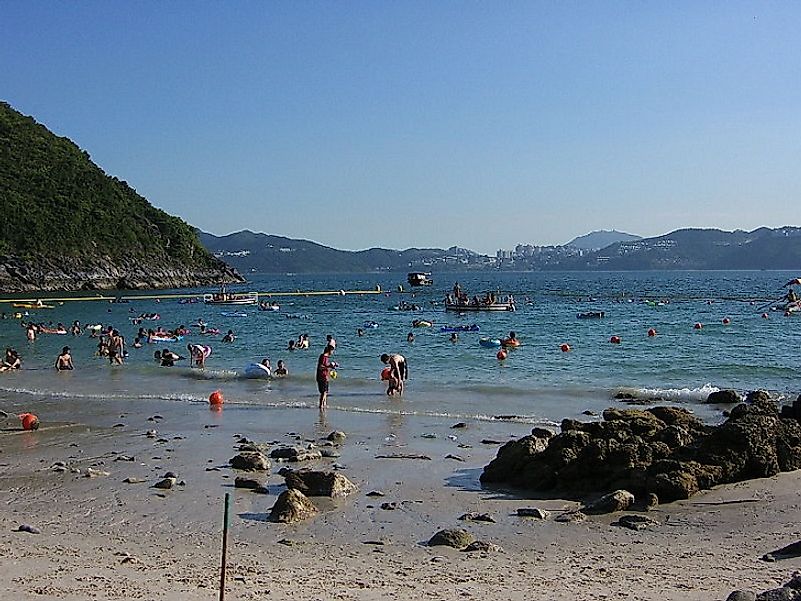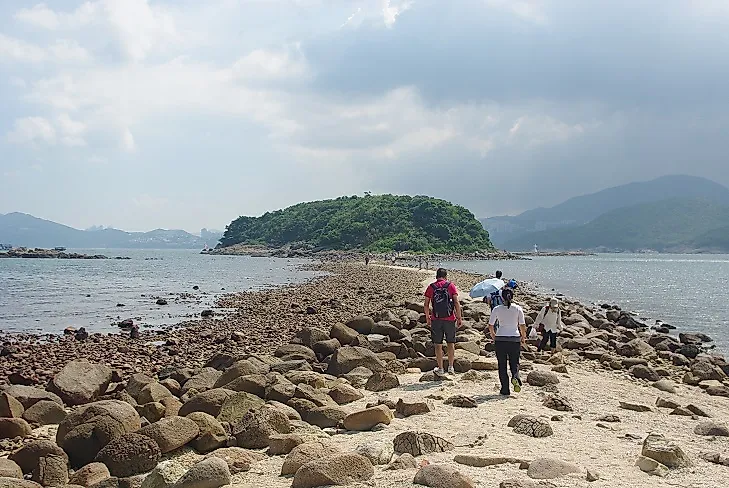Hong Kong's Sharp Island (Kiu Tsui Chau)

5. Description
Kiu Tsui Chau, or Sharp Island, is part of the Hong Kong United Nations Educational, Scientific, and Cultural Organization (UNESCO) Global Geopark, famous the world over for its unique variety of forests and beaches. It is the largest island of the eight islands in the Kiu Tsui Country Park of Hong Kong. The island is long and narrow at 2,500 meters in length and about 500 meters wide. The geological formations on the island resulting from volcanic activity centuries ago draws a number of tourists to the interesting pineapple-shaped rocks. The beautiful beaches are the major draw of the island. There are three main beaches on Kiu Tsui Chau. One is found at Hap Mun Bay in the south, and two at Kiu Tsui on the west coast. The island serves as a favorite place for locals who go there for barbecue activities, as well as to fish and swim.
4. Historical Role

Geologists believe that about 140 million years ago a volcano was located near the island. Kiu Tsui Chau's proximity to the volcano resulted in the variety of volcanic rocks from different geological periods that are found around the island today. Another interesting feature the island is known for is its vanishing natural bridge. The sea currents pushed sand and gravel near the shore of the island and formed a tombolo (pictured). This is a natural bridge made of different sized rocks and sand that connects Kiu Tsui Chau to the smaller island of Kiu Tau. At high tide, the tombolo is submerged in water and can only be accessed when the tide goes out. Kiu Tsui, the less populated of the beaches, once held a small village, as well as an amusement park. The latter now lies in ruins.
3. Modern Significance
Today the island is a popular holiday destination which offers crystal-clear water, gleaming soft sand, and amazing adventures among the reefs and the forests- both in the water and on land. Visitors can use the marked hiking trails to explore the forests or walk across the tombolo into the natural beauty of the Kiu Tau island. The Kiu Tsui Chau tombolo is about 250 meters in length, and a tidal schedule is posted for visitors to plan accordingly if they want to experience waling across the natural bridge. The island is one of the most popular swimming and barbecue locations of the Sai Kung islands and can be overwhelmed with locals and tourists during certain times of the year.
2. Habitat and Biodiversity
Seventy percent of the submerged area around the island is covered in stony coral reefs. On land, the island is home to a variety of plant and animal life. An endangered flower is found in the south of the island. Birds spotted on these islands are the Little Green Heron, the Indian Cuckoo, the Great Coucal, the White-bellied Sea Eagle, the Red-vented Bulbul, the Koel, the common Tailorbird, the Great Tit, the Black-necked Starling, the Crested Myna, the Black Drongo, the Magpie, and the Jungle Crow. Other wild animals are rare, but there have been occasional sightings of the Wild Boar.Among the eight islands of Kiu Tsui Country Park, only Kiu Tsui Chau has forested hills. The forests are composed of Camphor Tree, Ivy, Chinese Banyan, Horsetail Tree, and African Tulip Tree. The shrubs there include Rose Myrtle and Dwarf Mountain Pine.
1. Environmental Threats and Territorial Disputes
The growth of tourism often has detrimental affects on the environment, and such is the case on Kiu Tsui Chau. However, development in the tourist sector is monitored by the government which has required detailed plans for any development, such as that of a golf course. The government requires precise plans of environmental protection measures that developers are expected to implement. By establishing a UNESCO Global Geopark in Hong Kong, which includes Kiu Tsui Chau, the government seeks to encourage conservation, education, and sustainable development on the islands and the neighboring areas of the geopark. The government currently is focused on building local engagement and increasing science education for locals in order to develop geotourism on the island and lessen the harmful impact of so many tourists on the island.











